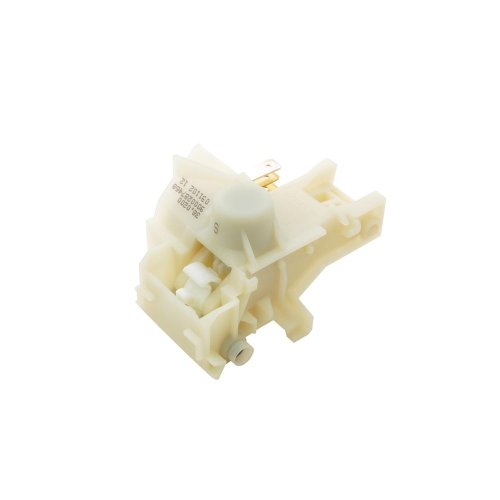




If your dishwasher won’t turn on, it can be frustrating and leave you feeling unsure of what to do next. However, you can trust our tested troubleshooting guide to help you identify and resolve the problem. Before you give up and call a technician, there are several things you can check on your own to see if you can fix the issue.
1. Check the power supply: Make sure that the dishwasher is securely plugged into a working power outlet. If you are unsure whether the outlet is providing power, you can try plugging in another appliance to see if it works. Additionally, check the fuse or circuit breaker to ensure it hasn’t been tripped or blown.
2. Inspect the control panel: Look for any signs of damage or loose wires behind the control panel. If you find any defective parts or wires, they may need to be replaced. Also, check if the control panel display is showing any error codes or if the child-lock feature has been activated.
3. Examine the door latch: Ensure that the door latch is properly secured and latches tightly. If the latch is broken or doesn’t close properly, it can prevent the dishwasher from starting.
4. Test the timer and cycle switches: Make sure that the dishwasher’s timer and cycle switches are in the correct position. If they are already set properly but the dishwasher still won’t turn on, it’s likely that there is an issue with these components and they may need to be replaced.
5. Make sure the motor is working: Check if the dishwasher’s motor is running. If you don’t hear the motor at all, it may be defective and need to be replaced. However, if the motor is running but the dishwasher still won’t start, there may be other reasons behind the problem.
If you’ve double-checked all of these potential issues and the dishwasher still won’t turn on, it’s recommended to call a professional plumber or technician for further diagnosis. They will have the expertise and knowledge to determine the exact cause and provide the necessary repairs or replacements. Don’t let a broken dishwasher keep you from enjoying a clean and efficient kitchen – let the experts help you get your dishwasher back in business!
Solved: Dishwasher Won’t Turn On – Troubleshooting Guide
Is your dishwasher not turning on? Don’t worry, we’ve got you covered. Here’s a troubleshooting guide to help you get your dishwasher up and running again.
Check the Power Supply

- Make sure the dishwasher is properly plugged into a functioning power outlet.
- Check if there’s a power outage in your area. If so, wait for the power to be restored before trying again.
- Ensure that the power supply switch for the dishwasher is engaged.
- Inspect the power cord and wires for any damage or loose connections.
Inspect the Control Panel
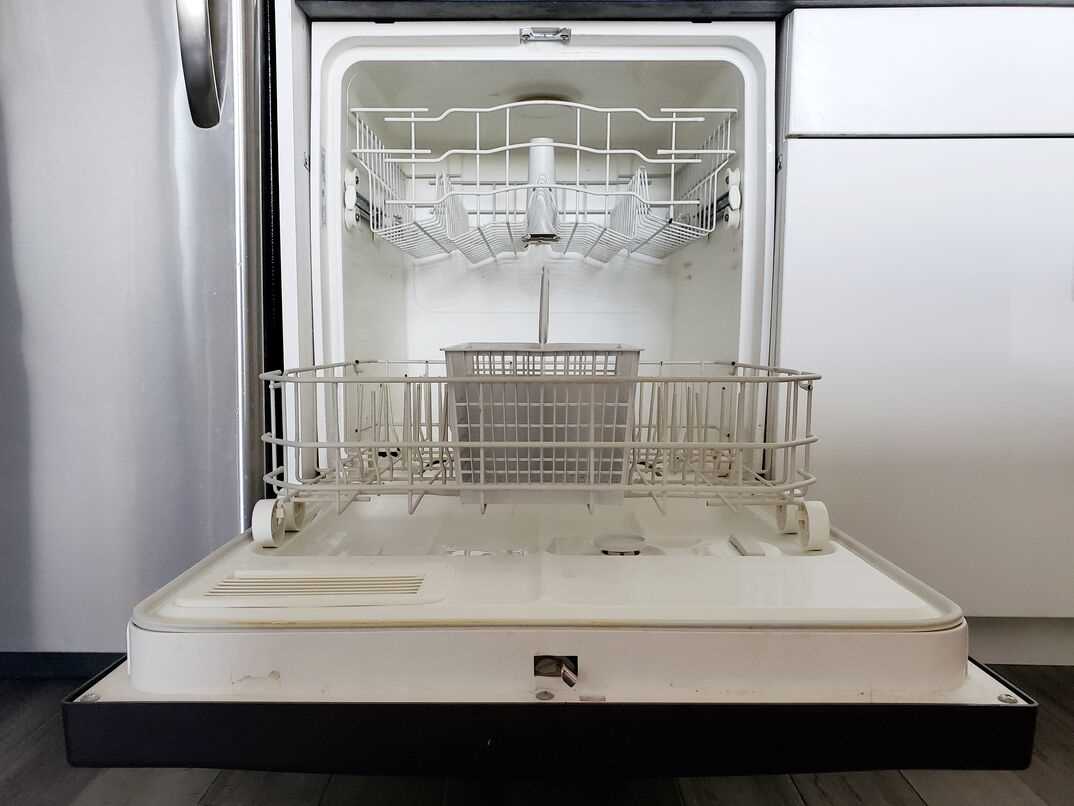
- Check if the control panel is displaying any error codes or flashing lights. Refer to the dishwasher’s user manual for troubleshooting specific error codes.
- Make sure the door of the dishwasher is properly latched and securely closed.
- Look for any visible damage or loose wires on the control panel. If you find any, it may indicate a faulty part that needs repair or replacement.
Check the Timer and Cycle Settings
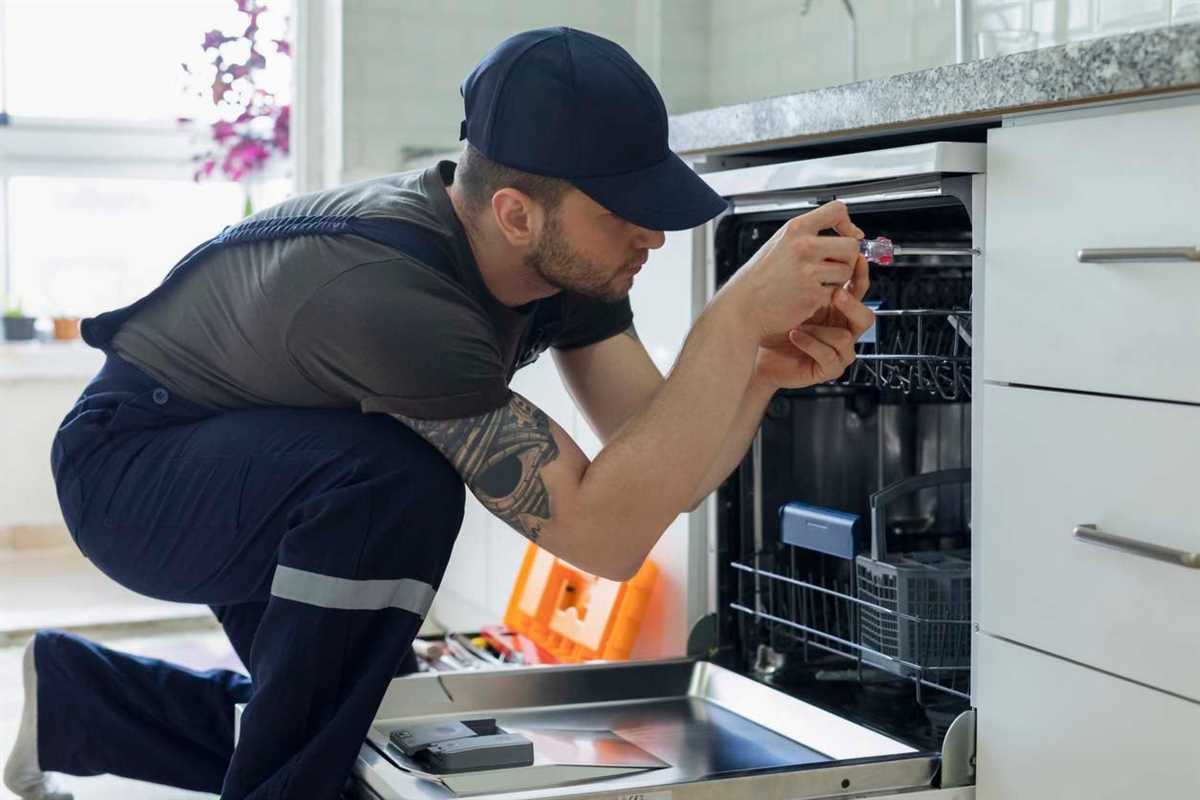
- Verify that the dishwasher timer is set to a valid cycle and not in the middle of a cycle.
- Ensure that the cycle settings are appropriate for the type of load you are trying to run.
- If the dishwasher has a delayed start feature, check if it is activated and set to start at a later time.
Test the Fuse and Thermal Part
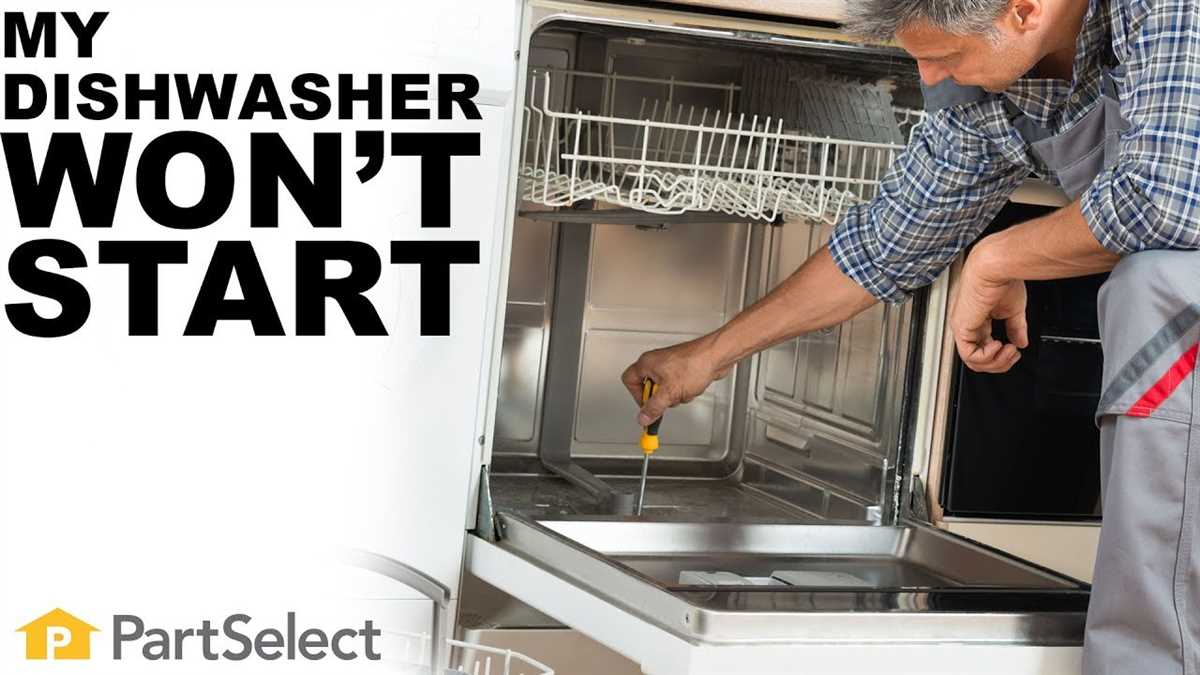
- Find out if the dishwasher has a fuse or thermal part that could be causing the issue. Consult the dishwasher’s user manual or contact the manufacturer for guidance.
- If you suspect a blown fuse or faulty thermal part, you can try replacing it with a new one.
Double-Check the Child Safety Lock

- Ensure that the child safety lock feature is not activated and preventing the dishwasher from turning on. Check the user manual for instructions on how to disable the child lock feature.
Call for Professional Help
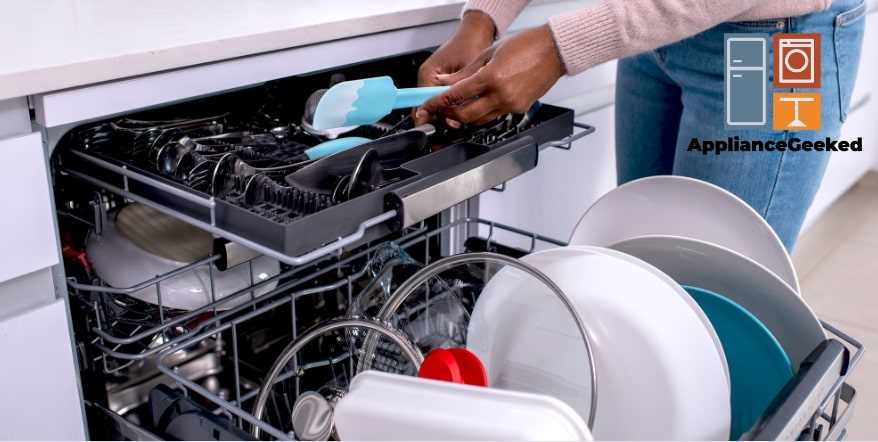
If none of the above tips help to solve the problem, it’s time to call a professional. A qualified technician, who specializes in dishwasher repairs, can diagnose and fix any issues that are beyond your expertise. Trying to fix things yourself may lead to further damage or void any warranties.
Remember, appliances like dishwashers have complex electronic wiring and components that require the skills of a trained professional. So, don’t hesitate to seek professional assistance when needed.
Following these troubleshooting steps should help you identify and resolve the reasons why your dishwasher won’t turn on. With a little bit of effort and expert help if needed, you’ll have your dishwasher running smoothly again in no time!
Check Power Supply
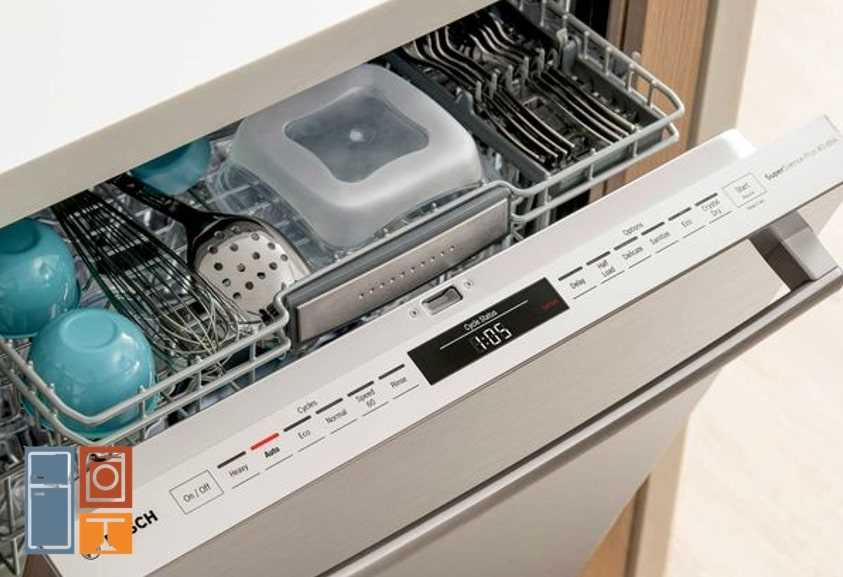
If your dishwasher won’t turn on, one of the first things you should check is the power supply. It could be as simple as a loose or unplugged power cord. Here are some troubleshooting steps to follow:
- Start by checking the power cord to ensure it is securely plugged into an electrical outlet. If it is loosely plugged in or not plugged in at all, plug it in securely and try turning on the dishwasher again.
- Inspect the power cord for any signs of damage or frayed wires. If you notice any exposed wires or damage, do not attempt to use the dishwasher. Unplug the appliance and consider contacting a professional for repairs.
- If the power cord appears to be in good condition, try pulling out the dishwasher and removing the kickplate located at the bottom. This will give you access to the power junction box.
- Using a needle-nose pliers or a similar tool, check the connections inside the power junction box. Look for any loose wires or connections that may have come undone. If you find any loose connections, try reconnecting them and see if that helps resolve the issue.
- Check for any tripped circuit breakers or blown fuses in your home’s electrical panel. Replace any blown fuses or reset any tripped breakers and see if the dishwasher turns on.
- If none of the above steps work, it may be necessary to test the outlet itself to ensure it is working properly. You can do this by plugging in another appliance or device and see if it powers on. If the outlet is not working, you may need to call an electrician to repair it.
By checking the power supply and following these troubleshooting steps, you can potentially save yourself the hassle and expense of calling for professional services. However, if the dishwasher still does not turn on after checking the power supply, it may be time to consult the appliance manual or visit the manufacturer’s website for further assistance or to schedule a repair.
Inspect Control Panel
If your dishwasher won’t turn on, the first step is to inspect the control panel. This is where you select the settings and start the dishwasher’s operation. There are several components and features in the control panel that you should check:
- Power source and cable: Make sure the dishwasher is properly plugged into a working power outlet. Inspect the power cable for any damage or loose connections.
- Control drive motor: The control drive motor is responsible for powering the control panel. If it’s defective, the dishwasher won’t turn on. You may need to replace the motor to fix the issue.
- Selector switch: Check if the selector switch is set to the correct setting. Sometimes, the dishwasher may not turn on if the switch is between settings or set to the wrong mode.
- Child-lock feature: If your dishwasher has a child-lock feature, make sure it’s not activated. Some models have a specific button combination or code to disable the child-lock feature.
- Timer and timer motor: The timer controls the duration of the dishwasher’s cycle. If the timer or timer motor is defective, the dishwasher may not start. Consider replacing these components if necessary.
- Internal wiring: Inspect the wiring inside the control panel for any loose connections, frayed wires, or signs of damage. If you notice any issues, proper wiring or wire replacement may be required.
- Door latch and seal: Ensure that the door latch is properly engaged and the door seal is intact. If the door is not closed and sealed correctly, the dishwasher may not start.
If you’ve checked all the above components and features and nothing seems to be wrong, it’s recommended to follow the troubleshooting guide provided by the dishwasher’s manufacturer. They may have specific instructions or recommendations for your dishwasher model that can help resolve the issue. If the problem persists, it’s best to contact a professional technician who’s experienced in dishwasher repairs and diagnosis.
Examine Door Latch

When your dishwasher won’t turn on, it’s important to consider the door latch as a possible culprit. The door latch ensures that the dishwasher door is properly closed and latched before the cycle can start. If the door is not securely closed or the latch mechanism is not engaged, the dishwasher cannot begin its cycle.
Steps to examine the door latch:
- Start by opening the dishwasher door and checking if it closes properly. If the door won’t shut or doesn’t stay closed, this could be the cause of the problem.
- Inspect the latch mechanism for any visible damage or obstructions. Make sure that there are no foreign objects, such as food residue or debris, preventing the latch from fully engaging.
- Check the wiring connections between the door latch and the dishwasher’s control panel. Ensure that all wires are securely connected and undamaged.
- If you have a dishwasher with electronic buttons and controls, make sure that the control panel is functioning correctly. Test other buttons on the panel to see if they work. If only the power button doesn’t respond, it’s likely a problem with the door latch.
- Verify that the door latch meets safety standards. Some dishwashers have a child-lock feature that prevents accidental operation. Check the settings to make sure the child-lock is not activated.
- Unplug the dishwasher and wait for a few minutes before plugging it back in. This can help reset the dishwasher’s electronics and clear any temporary glitches.
- If you’re unsure about examining the door latch or if none of the above steps resolve the issue, it would be best to call professional dishwasher repair services. They have the expertise to diagnose and fix the problem efficiently.
Remember, before hiring any repair services, it’s important to check if the dishwasher is still under warranty. If it is, contacting the manufacturer’s customer support may be the most cost-effective solution.
By checking the door latch and following the troubleshooting steps outlined here, you can save time and money on unnecessary repairs. If the door latch was the problem, your dishwasher should now turn on and start a cycle.
Verify Water Supply
Before you start troubleshooting your dishwasher, make sure that your dishwasher is receiving an adequate supply of water. Here are some steps you can take to verify the water supply:
- Check that the water supply valve is turned on. It may have been accidentally turned off or closed during a recent plumbing repair or maintenance work.
- Inspect the water supply line for any kinks, bends, or blockages. Ensure that it is properly connected to your dishwasher and is not leaking.
- If you have recently moved into a new house or renovated your kitchen, double-check that the water supply line is actually connected to your dishwasher. Sometimes, the line may be mistakenly plugged into a different appliance.
- Make sure that the water pressure is sufficient. Low water pressure can prevent the dishwasher from working properly. If you suspect low water pressure, contact a plumber to help you resolve the issue.
If the water supply seems to be the problem, try resetting the dishwasher. Turn off the dishwasher and unplug it from the power source. Wait for about 3 to 5 minutes, and then plug it back in and turn it on again. This simple reset may fix any electronic glitches that were preventing the dishwasher from receiving water.
If the water supply is fine and the dishwasher is still not turning on, there may be a more complex problem with the machine. In this case, you should consider hiring a technician to diagnose and repair the issue.
Consider Professional Repair
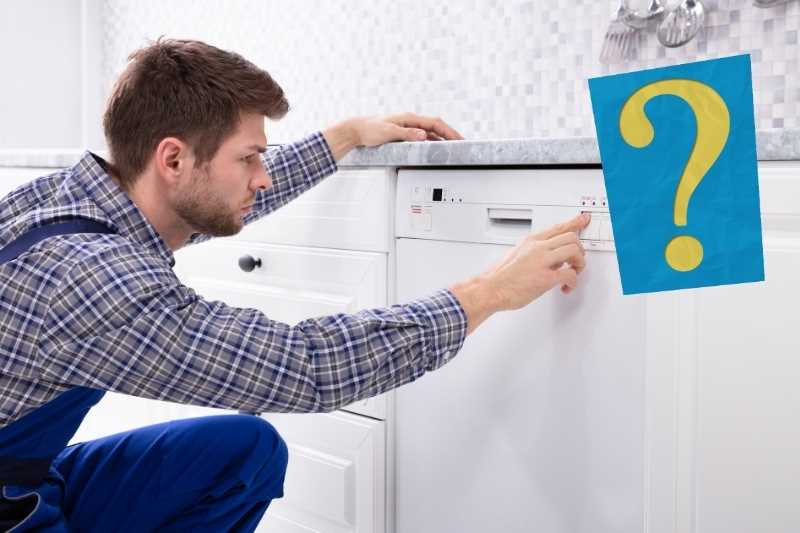
If you have tried all the troubleshooting steps mentioned above and your dishwasher still won’t turn on, it may be time to consider professional repair. There could be an underlying issue with the electrical system or a faulty part that is preventing the dishwasher from starting properly.
Before calling a technician, make sure to check if the dishwasher is plugged in and if there is power supply to the appliance. If unsure, you can try plugging another electrical device into the same outlet to see if it works. If there is no power supply, consider checking the circuit breaker and resetting it if necessary.
If the dishwasher is receiving power but still not turning on, it could be a problem with the control panel, timer, latch, or any other part that is responsible for starting the machine. These components may need to be tested or replaced by a professional technician.
In some cases, there may be a specific error code displayed on the control panel that can help identify the issue. You can refer to the dishwasher’s user manual or contact the brand’s customer support for further assistance.
Professional repair technicians have the knowledge and experience to diagnose and fix a wide range of dishwasher problems. They can also provide advice on maintaining your dishwasher and preventing future issues. If your dishwasher is still under warranty, it is recommended to contact the manufacturer or authorized service center for repairs.
To save time and ensure a successful repair, it is important to provide the technician with accurate information about the problem and any troubleshooting steps you have already taken. This can help them quickly identify the root cause and come prepared with the necessary tools and replacement parts.
Remember, attempting to repair a dishwasher yourself without proper knowledge and tools can be dangerous and may void the warranty. It is best to leave the repair work to the professionals.
FAQ
My dishwasher won’t start, what should I do?
If your dishwasher won’t start, check if it is properly plugged into an electrical outlet. Also, make sure that the circuit breaker or fuse is not tripped. If everything seems fine, check if the door latch is properly closed. If the latch is jammed or not working, you may need to replace it.
Why is my dishwasher not turning on even when it’s plugged in?
If your dishwasher is not turning on even when it’s plugged in, there might be an issue with the electrical supply. Check if the power outlet is working by plugging in another appliance. If the power outlet is fine, the problem may be with the dishwasher’s control panel or the door latch. You may need to call a technician to diagnose and fix the issue.
What can cause a dishwasher latch to jam?
A dishwasher latch can jam due to various reasons. It could be due to debris or food particles blocking the latch mechanism, or the latch itself might be worn out or damaged. Additionally, if the dishwasher door is not aligned properly, it can put pressure on the latch and cause it to jam. Inspect the latch and the surrounding area for any signs of obstruction or misalignment.
My dishwasher door latch is jammed, how can I fix it?
If your dishwasher door latch is jammed, try cleaning the latch mechanism with a brush and soapy water. Remove any debris or food particles that might be causing the jam. If the latch is heavily damaged or worn out, you may need to replace it. Consult the dishwasher’s user manual or contact the manufacturer for specific instructions on replacing the latch.
What should I do if my dishwasher won’t start even after fixing the latch?
If your dishwasher still won’t start after fixing the latch, there might be an issue with the control panel or the electrical components. It is recommended to call a professional technician to diagnose and repair the problem. They will have the necessary tools and knowledge to troubleshoot and fix the issue effectively.
Is it possible to bypass the door latch to make my dishwasher start?
No, it is not safe or recommended to bypass the door latch of your dishwasher. The door latch is an important safety feature that ensures the door is securely closed during operation. Bypassing the latch can lead to accidents or damage to the dishwasher. If your door latch is not functioning properly, it is best to replace it or seek professional help to fix it.












